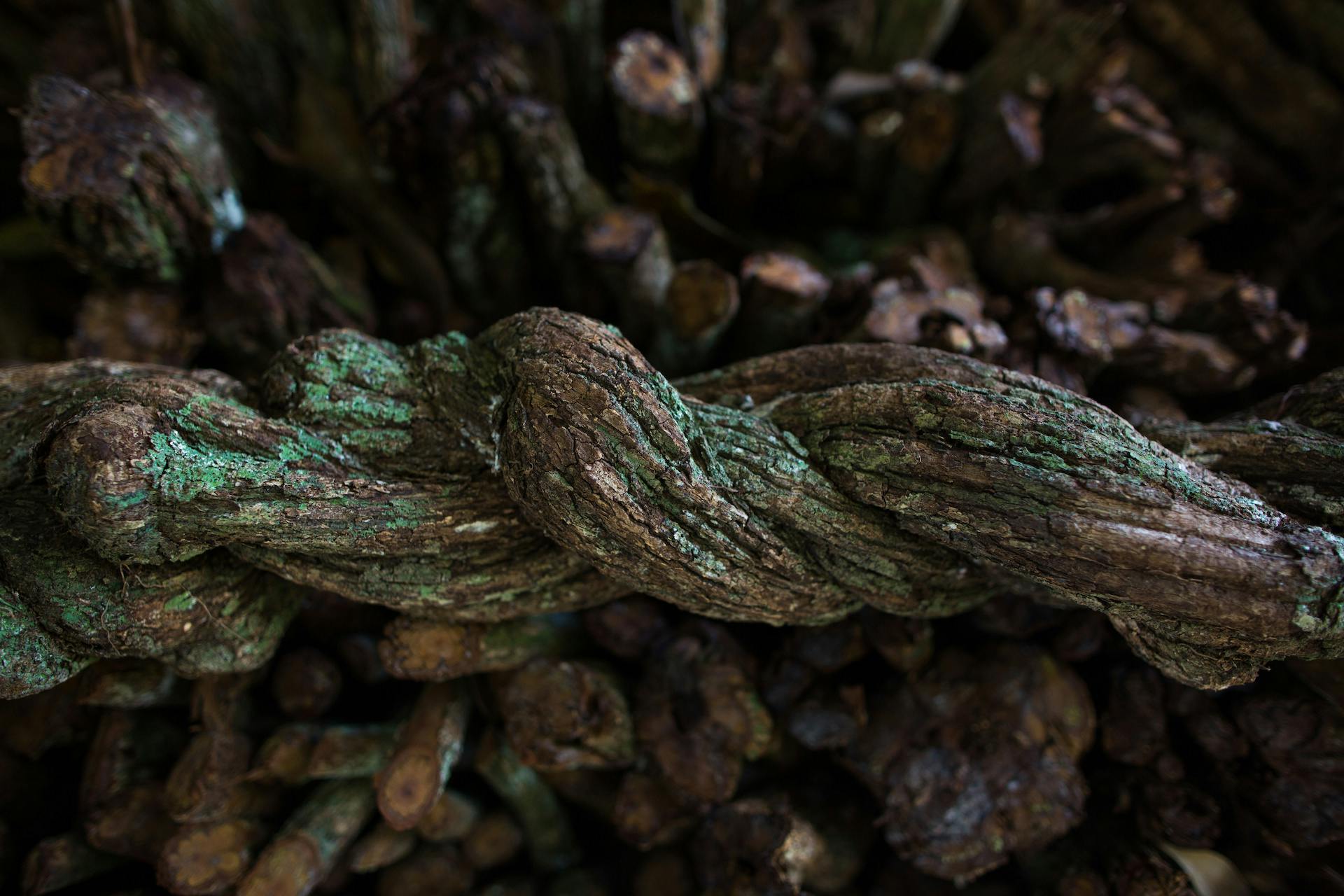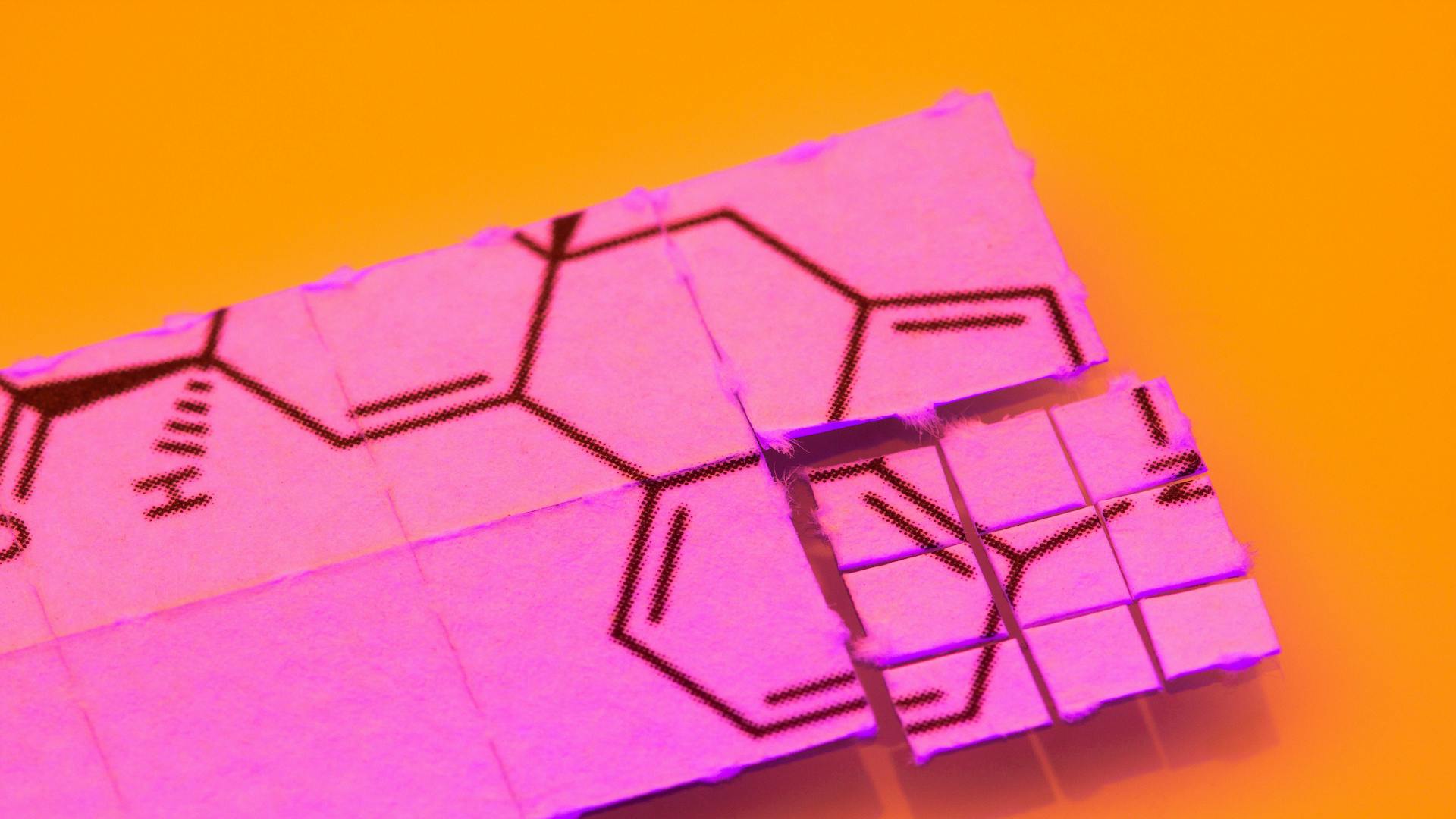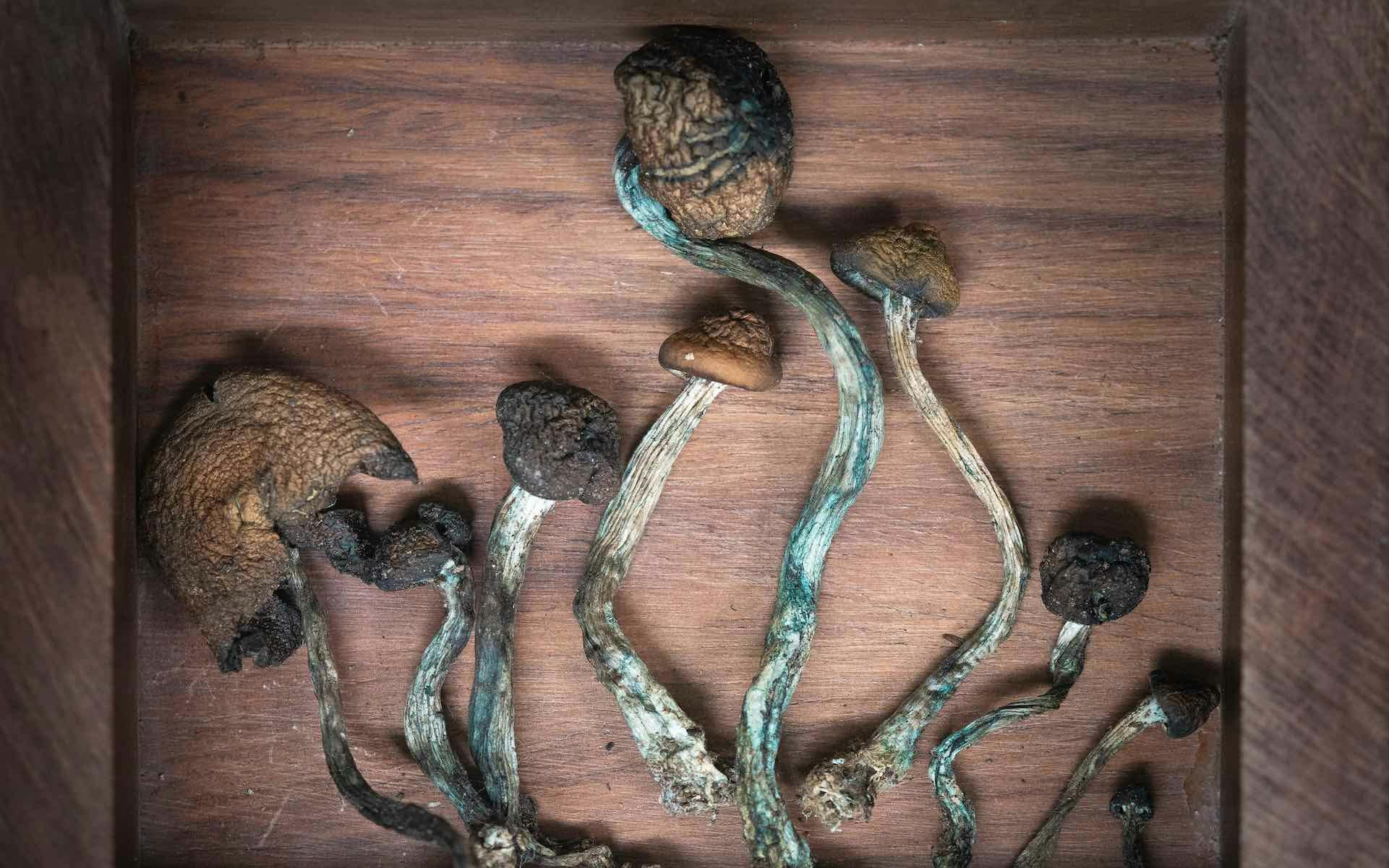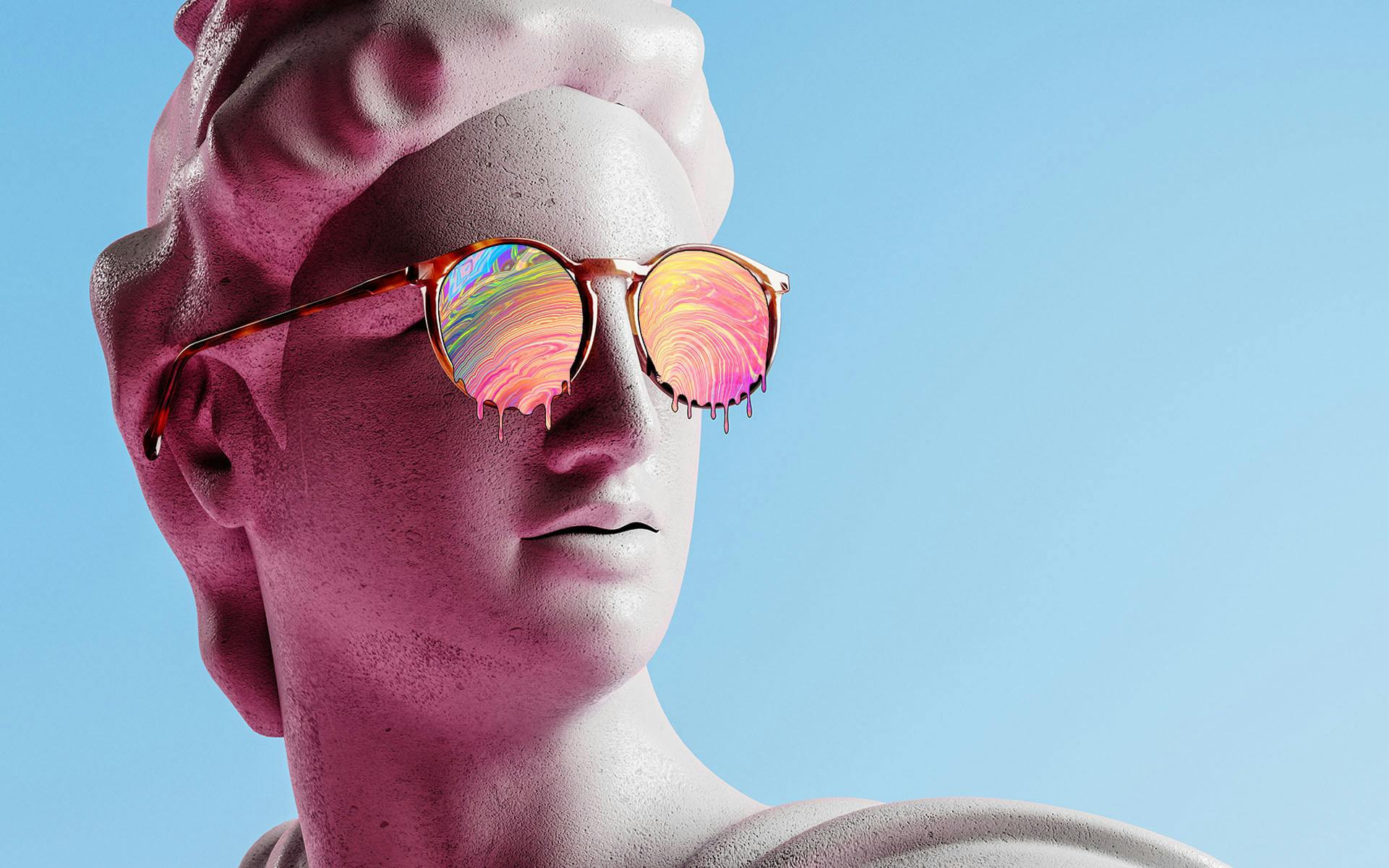Written by Emma Stone

In the limestone soils of the Chihuahuan desert of southern Texas and northern Mexico, a small, spineless cactus grows. This globular-shaped plant, peyote, has been used as a powerful plant medicine for healing ailments by generations of indigenous Americans. The Huichol people of Mexico, the Native American Church in the United States, and other indigenous tribes still use peyote as a sacrament in ceremonies.
Peyote has also been embraced by individuals seeking psychedelic experiences. The psychedelic potency of peyote lies within the alkaloids in the plant, particularly its principal alkaloid, mescaline.
Mescaline is considered a classic psychedelic, renowned for its intense hallucinogenic effects. Consuming dried peyote “buttons” or sipping peyote-infused tea can send the consumer on a journey that lasts up to twelve hours, altering their perceptions of self and reality.
What is the history of peyote?
Peyote (Lophophora williamsii), and mescaline, have a rich and compelling history. The psychedelic cactus has been used among indigenous Americans for at least 5,000 years to treat physical ailments such as snakebites, burns, wounds, rheumatism, fever, and scorpion stings.
While the cactus was sometimes historically used for vision quests—spiritual journeys undertaken by young men on the cusp of adulthood—nowadays, peyote is mainly used by indigenous people as a healing medicine. Some Native American tribes believe that using peyote to induce a vision or a psychedelic experience is a misappropriation of the plant.
The Native American Church (NAC), formed in the late 1800s, also honors the spiritual use of peyote and members sometimes ingest the cactus as a religious sacrament for healing during prayer ceremonies. Although specific elements of peyote ceremonies can vary among tribes, they are always led by a healer or “roadman” and usually last all night. The use of peyote by the Native American Church was made legal by a 1994 amendment to the American Indian Religious Freedom Act.
The diminutive cactus made its way from its desert home to pharmaceutical laboratories in the late 1800s and early 1900s. Mescaline was used in experiments to gain insights into schizophrenia and to treat psychological disorders. In these clinical settings, mescaline yielded inconsistent results, with some study participants experiencing severe nausea, paranoia, or depression. As a result, scientists set mescaline aside in favor of researching LSD.
Mescaline also made an appearance in WWII, in the human experimentation programs of the Third Reich. Concentration camp prisoners were forced to take mescaline to test its efficacy as a truth serum. Around the same time, the US Office of Strategic Services—the CIA’s predecessor—also experimented with mescaline as a truth elixir. Ultimately, the research was abandoned because nausea experienced by the subjects prevented them from trusting their interrogators.
Shop highly rated dispensaries near you
Showing you dispensaries nearSince then, peyote and mescaline have dipped in and out of popular culture. Books like The Doors of Perception by Aldous Huxley and Carlos Castaneda’s series on the teachings of Don Juan encouraged a new wave of creatives and psychonauts to experiment with the plant.
What is mescaline and how does it work on the brain?
Mescaline, also known as 3,4,5-trimethoxyphenethylamine, is the main psychoactive alkaloid found in peyote. Mescaline is also found in South American cactus species such as the San Pedro cactus, the Peruvian torch cactus, and the Bolivian torch cactus.
The alkaloid was first isolated from peyote in 1896 and is believed to be responsible for the plant’s hallucinogenic effects. However, there are more than 50 other psychoactive alkaloids present in peyote that may enhance the effects of mescaline—a process comparable to the entourage effect in cannabis.
Like DMT, LSD, and psilocybin, mescaline appears to increase the release and reuptake of serotonin in the brain. Serotonin is a neurotransmitter that influences mood, sensory perception, sleep, hunger, body temperature, and muscle control. Neurotransmitters are molecules that share messages between the brain’s neural cells, or between neural cells and muscles.
There’s also evidence that mescaline may mildly affect dopamine levels in the brain. Dopamine is a neurotransmitter associated with “feel-good” sensations that also influence learning, memory, and motor system function.
Compared to other classic psychedelics, mescaline is the least potent drug of the group. Still, its effects can linger the longest—up to 12 hours, or in some cases, longer. Mescaline also takes the longest to kick in: one to three hours, in contrast to approximately 20-40 minutes for LSD or psilocybin.
Individuals who take mescaline often develop tolerance a few days after consumption, but sensitivity is restored after several days of abstinence. There’s no evidence to suggest that mescaline can cause addiction or dependence.
How do peyote and mescaline make you feel?
Thanks to increased serotonin levels circulating in the brain, mescaline produces a smorgasbord of intense visual, sensory, and physiological experiences.
Individuals on mescaline may experience intense emotions such as euphoria, or panic and paranoia at the other end of the spectrum. Feelings and tactile sensations can be heightened, colors appear more radiant, and time can feel like it’s passing more slowly or more rapidly. Visual hallucinations can occur with both open and closed eyes. Individuals can also experience ego loss and gain insights into their own lives and the nature of reality.
Mescaline often induces hours of nausea and vomiting before the hallucinations begin. Mike Jay, author of Mescaline: A Global History of the First Psychedelic, notes that mescaline delivers a serious hangover before giving insights and healing. Other physical responses like sweating and chills can also occur, along with confusion and difficulty concentrating or communicating.
Mescaline can also sometimes cause trouble sleeping in the days after consumption. In one case, a 54-year-old man experienced psychosis due to sleep deprivation. However, the psychosis was fully resolved after 15 hours of sleep.
Compared to LSD and psilocybin, those who have experienced mescaline describe it as a trip unique from other psychedelics: The peyote journey is much more drawn out, with less of an extreme peak.
Experiencing a peyote ceremony
Robin Stebbins, registered nurse, psychiatric RN, and wellness coach, participated in a peyote medicine ceremony early in 2021. “It was a three-day stay-up-all-night intensive and not for the faint of heart,” said Stebbins. “It was one of the most difficult yet amazing experiences of my life.”
Stebbins explained that the ceremony was instrumental to the experience of peyote. “During this particular ceremony we had to stay awake all night for both nights and would have periodic dancing rituals around the sacred fire,” she said.
“At one point we spoke all of our sadness, our guilt and transgressions into the fire to be released into the heavens. That felt so freeing, and such a release.” Stebbins also explained that the rhythmic dancing enhanced the medicine. “A lot of the music that’s played is from ancient tribal ancestors and will activate the medicine inside your body more than if you were sitting by yourself in a room,” she said.
From a physical perspective, Stebbins found the ceremony demanding. “The experience is difficult in that your body wants to sleep and get warm and cozy, but the best use of your time with the medicine is to stay aware and activate inner stillness and listening. I equate it to doing a yoga class for 12 hours—it feels good after you’ve completed it,” she reflected.
For Stebbins, the insights that came from the peyote ceremony were profound. “I felt an incredible connection to my son and saw doors opening of how I could be a better parent—more involved, less disciplinary—tapping into kindness, compassion, and love,” she said.
However, Stebbins also cautioned that the path to gaining enhanced self-understanding could be confronting. “The peyote shows you the parts of yourself that need loving awareness and consciousness in order to shift, but this can be brought forward in very triggering ways,” she said. “It’s not just necessarily the wrongs that were done to you, but how you have shown up poorly in the world or have hurt others that comes to the surface. You see the best and worst of yourself in bright, amplified light.”
Ultimately, however, this confrontation with one’s “shadow,” as Stebbins articulated it, allows choices about how to move forward. “It can seem easier to stick with the sickness you know than jump off the cliff of the unknown, but the plant medicine points to the cliff and allows you to jump, having full faith in the divine to catch you and create something brand new.”
What is peyote used for today?
Nowadays, peyote is mostly used by indigenous Americans, members of the Native American Church, or individuals such as Stebbins looking to experience a transformative psychedelic trip.
Peyote is currently recognized as an endangered or threatened plant and with its Schedule I drug classification, there have been few clinical studies of mescaline since the 1970s. While the psychedelic research renaissance is underway with studies on psilocybin, LSD, MDMA, ketamine, and DMT exploding, mescaline has been somewhat sidelined.
That being said, there’s significant evidence to suggest mescaline holds therapeutic potential in treating mental health disorders such as depression, anxiety, migraines, obsessive-compulsive disorder, and addiction.
In a 2021 survey of mescaline consumers, researchers reported that 68-86% of individuals with depression, anxiety, PTSD, and addictive disorders experienced an improvement following their most memorable mescaline experience. Among these participants, 35-50% rated their mescaline experience as one of the five most spiritually meaningful experiences of their lives.
Whether studies exploring the therapeutic uses of mescaline pick up pace or not, there’s no doubt that this sacred plant medicine will continue being used in healing ceremonies for many more centuries to come.
Read more of Leafly’s guide to psychedelics
- Psychedelic medicine: How psychedelics can help
- How do psychedelics work?
- The history of psychedelics
- Which psychedelic drugs are legal?
- Is cannabis a psychedelic?
- How ego death can improve mental health
- Types of psychedelics
- MDMA
- LSD
- Mushrooms
- DMT
- Ketamine
- Ayahuasca
- Peyote/Mescaline
- How to dose psychedelic mushrooms
- Magic mushrooms and acid: What are the differences?
- Smoking weed with psychedelic mushrooms
By providing us with your email address, you agree to Leafly's Terms of Service and Privacy Policy.



